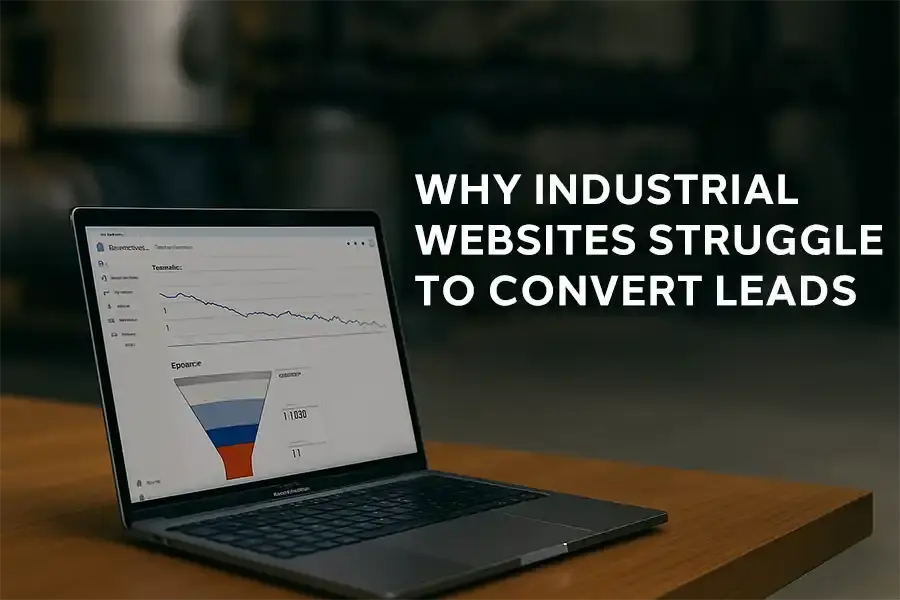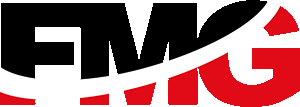Why Industrial Websites Struggle to Convert Leads

Industrial companies often view their website as a necessary marketing tool, but many are disappointed when it fails to produce qualified leads. Unlike consumer sites, industrial websites cater to a specific audience — engineers, purchasing managers, and technical decision-makers who arrive with well-defined objectives. They aren’t casually browsing; they’re searching for detailed information to make an informed choice. When a website doesn’t meet these expectations, potential opportunities slip away.
So why do so many industrial websites fail to convert leads? Here are the most common problems — and how to fix them.
Poor User Experience and Navigation
One of the biggest roadblocks is navigation. Many industrial websites still rely on outdated structures with lengthy dropdown menus, inconsistent product categories, or technical information buried several clicks away. When an engineer is on a tight schedule, they don’t have time to hunt through vague categories to find a datasheet or CAD file.
A confusing user experience signals to buyers that working with your company may be just as frustrating. Streamlined navigation with clear categories, easy search functionality, and industry-specific landing pages makes it simple for visitors to find what they need. The easier the journey, the higher the chance of conversion.
Lack of Mobile Optimization
Even in the industrial world, mobile matters. Engineers and buyers often begin their research on their phones or tablets, whether they’re in the office, on the shop floor, or at a job site. If your website isn’t mobile-friendly, you risk losing credibility before the conversation even begins.
A site that forces users to pinch and zoom to read specs, or one where forms break on smaller screens, creates friction. Responsive design ensures that datasheets, RFQ forms, and technical visuals are usable on every device. In today’s market, mobile optimization isn’t optional — it’s a basic expectation.
Weak or Missing Calls-to-Action
A surprising number of industrial websites bury their calls to action or rely on a single “Contact Us” link. While that might catch the occasional lead, most buyers need more context before they’re ready to reach out. If your site doesn’t guide them toward the next step, they’ll move on to a competitor who does.
Effective CTAs are specific and tailored to the buyer’s stage of the research process. On a product page, this might be labeled as “Request a Quote” or “Download Specifications.” On a case study, it might be “Schedule a Consultation.” The key is offering relevant options in visible locations — not forcing every visitor into the same generic form.
Not Enough Technical Content
Industrial buyers are technical buyers. They expect to see detailed product specifications, compliance information, certifications, and real-world applications. If your site relies only on marketing fluff or buzzwords, decision-makers may doubt your credibility.
Strong technical content not only builds trust but also reduces friction in the sales process. Engineers don’t want to wait for a salesperson to send basic specs — they want to verify the details themselves. By publishing robust product descriptions, CAD drawings, case studies, and industry-specific application notes, you position your company as a reliable source of information. That trust directly translates into more conversions.
Slow Load Speeds and Outdated Design
Speed matters. If your website takes too long to load, buyers will bounce before they ever see your products. Many industrial websites are weighed down with oversized images, outdated code, or legacy hosting setups that make them sluggish.
Design plays a role, too. A dated, cluttered design doesn’t inspire confidence. Buyers may wonder if an outdated website reflects an obsolete company. Investing in speed optimization and a clean, modern design shows that your business is professional and forward-thinking. It also keeps users engaged long enough to convert.
No Lead Nurturing Path
Even if a visitor isn’t ready to request a quote today, that doesn’t mean they won’t be in six months. Unfortunately, many industrial websites lack any lead-nurturing strategy. Without gated resources, newsletters, or remarketing campaigns, potential customers leave and are never seen again.
The solution is creating pathways for early engagement. Offer downloadable resources, such as industry guides or application checklists, in exchange for an email address. Utilize remarketing ads to maintain visibility after visitors leave your site. By building a nurturing system, you stay top of mind until they’re ready to move forward.
Turning Your Website Into a Sales Tool
At its core, an industrial website should be more than a digital brochure. It should function as an extension of your sales team — educating, guiding, and ultimately converting the right audience into qualified leads. By improving navigation, strengthening CTAs, creating robust technical content, and modernizing performance, you can make a site that not only looks good but also delivers measurable results.
If your website isn’t producing the leads you expect, it’s not a sign that digital marketing doesn’t work for industrial companies. It’s a sign that your site wasn’t built with conversion in mind. With the right strategy, your website can become one of your most valuable sales tools.
At Freelance Marketing Group, we help manufacturers and distributors turn underperforming websites into powerful lead-generation platforms. If you’re ready to see what your site is truly capable of, contact us today.
